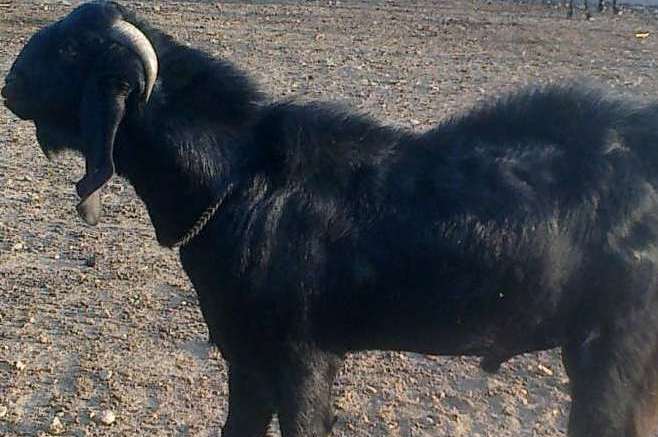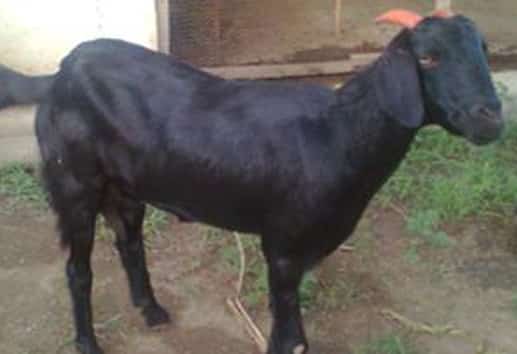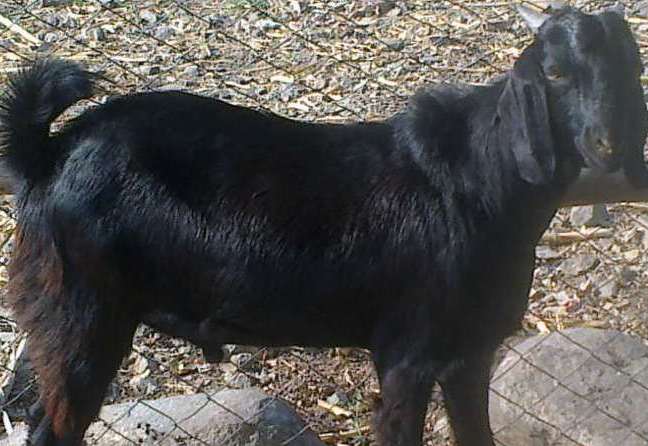Osmanabadi Goat Breed Guide:

Osmanabadi Goat Distribution:- This breed is mainly spread in Latur, Osmanabad, Ahamednagar, Parbhani, and Solanpur district of Maharashtra state. This goat breed is also found in Marathwada,Vidharva,Western Maharshtra & adjoining parts of Andhra pradesh, Telanagana and Karnataka.
Osmanabadi Goats Milk Yield:- Basically this breed is raised for both milk and meat. Osmanabadi female goat gives an average milk yield of 1 to 1.5 liter for about 4 months lactation period. The dressing percentage of Osmanabadi goat is about 40%.
Kidding of Osmanabadi Goats:-Mostly, these goats breed twice a year and twinning and triplets is common in these breeds.

Characteristics of Osmanabadi Goats:- look wise, these goats are medium to large in size and coat colour found is mainly black (75%). Rest of the breed is found with white, spotted or brown colour. In this breed, 90% of males are horned and females are poled or horned.
Performance of Osmanabadi Goats:- This goat breed shows very high degree of disease resistance and capable of surviving in drought conditions. These goats can be very well managed in semi stall feeding system. Female goats (Does) give first kidding @ about 15 months and expected lactation period is about 4 months. Leather of these goats is fairly of good quality. Osmanabadi goat meat is very well preferred by urban and rural population as well.

Osmanabadi Goat Breed Features Chart:-
- Average body weight of male goat is about 32 to 36 kg.
- Average body weight of female goat is about 30 to 32 kg.
- Average body length of male Osmanabadi goat is about 68 cm.
- Average body length of male Osmanabadi goat is about 66 cm.
- Average chest girth of male Osmanabadi goat is about 72 cm.
- Average chest girth of female Osmanabadi goat is about 71 cm.
Price of Osmanabadi Goats:- There are two options to select these breeds.
- Going to local or nearby markets (adda/santha) and select the goats
- Going to supplier where they exclusively rear this breed.
Male goats are always in high demand, they may cost from 4500 to 6000 rupees per goat where as female goats may cost from 3500 to 4500 rupees per goat. Again this all depends on the age/health/breeding stage and muscle strength of the goat. Usually for every 25 female goats, there should be a 1 male goat in the flock.
Other things to consider:- The kidding percentage mainly depends on the feed. If nutritious fodder is provided apart from natural feed, there is a 100% of chance of having twinning and triplets from second kidding itself. Usually you can expect 1 kidding (2 kidding rarely) in first birth.Always take veterinary doctor with you to select the quality goats.
For all other Goat Farming Information: Read here.
I want to guidance for goat farming.